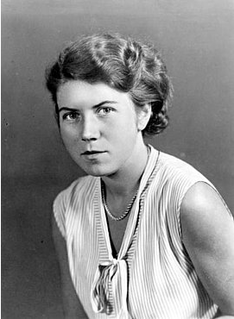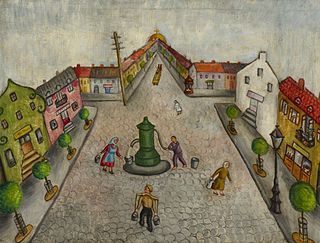
Buchenwald was a Nazi concentration camp established on Ettersberg hill near Weimar, Germany, in July 1937. It was one of the first and the largest of the concentration camps within Germany's 1937 borders. Many actual or suspected communists were among the first internees.

The Red Orchestra, as it was known in Germany, was the name given by the Abwehr Section III.F to anti-Nazi resistance workers in August 1941. It primarily referred to a loose network of resistance groups, connected through personal contacts, uniting hundreds of opponents of the Nazi regime. These included groups of friends who held discussions that were centred on Harro Schulze-Boysen, Adam Kuckhoff and Arvid Harnack in Berlin, alongside many others. They printed and distributed prohibited leaflets, posters, and stickers, hoping to incite civil disobedience. They aided Jews and resistance to escape the regime, documented the atrocities of the Nazis, and transmitted military intelligence to the Allies. Contrary to legend, the Red Orchestra was neither directed by Soviet communists nor under a single leadership. It was a network of groups and individuals, often operating independently. To date, about 400 members are known by name.

Maria "Mimi" Terwiel was a German resistance fighter against the Nazi regime. She was active in a group in Berlin that wrote and distributed anti-Nazi and anti-war appeals. As part of what they conceived as a broader action against a collection of anti-fascist resistance groups in Germany and occupied Europe that the Abwehr called the Red Orchestra, in September 1942 the Gestapo arrested Terwiel along with her fiancée Helmut Himpel. Among the leaflets and pamphlets they had copied and distributed for the group were the July and August 1941 sermons of Clemens August Graf von Galen which denounced the regime's Aktion T4 programme of involuntary euthanasia.

Numerous internment camps and concentration camps were located in France before, during and after World War II. Beside the camps created during World War I to intern German, Austrian and Ottoman civilian prisoners, the Third Republic (1871–1940) opened various internment camps for the Spanish refugees fleeing the Spanish Civil War (1936–1939). Following the prohibition of the French Communist Party (PCF) by the government of Édouard Daladier, they were used to detain communist political prisoners. The Third Republic also interned German anti-Nazis.
The Saefkow-Jacob-Bästlein Organization was an underground German resistance movement acting during the Second World War, that published the illegal magazine, Die Innere Front.

Ilse Frieda Gertrud Stöbe was a German journalist and anti-Nazi resistance fighter. She was born and died in Berlin.
Hans Schaul was a German politician and a long-standing legally trained editor of the theoretical magazine of the Socialist Unity Party, Einheit.
Alfred Benjamin was a German bank employee who became a Communist activist. He was obliged to emigrate and in 1935 was in France where after 1940 he joined the French Resistance. He died in an accident during the late summer of 1942 while attempting to escape from collaborationist France to Switzerland.
The Rieucros Camp[ʁjø.kʁo] was an internment camp on a forested hillside near Mende in the French department of Lozère that operated from January 1939 to February 1942. Prime Minister Édouard Daladier established the camp by decree on January 21, 1939, to isolate members of the International Brigades from French society after the defeat of the Second Spanish Republic and subsequent exile, known as la Retirada, in the Spanish Civil War. Other "suspicious and undesirable foreign men," sometimes accused of common law crimes, were also interned. After France's entry into World War II, authorities transferred the men to the camp of le Vernet and began to intern "suspicious and undesirable foreign women" in October 1939. Following the Battle of France, Rieucros fell in the southern unoccupied zone and the Vichy regime assumed control of the camp from Third Republican authorities. In February 1942, authorities transferred the entire camp population of women and children to the camp of Brens.
Luise Kraushaar was a German political activist who became a Resistance campaigner against National Socialism and who also, after she left Germany, worked in the French Resistance. She later became a historian, employed at Berlin's Marxism–Leninism Institute in the German Democratic Republic.

Marta Husemann was a German actor and anti-Nazi Resistance fighter in the Red Orchestra.

Sibylle Boden-Gerstner was a German costume designer, artist and fashion writer. In 1956 she founded the East German arts and fashion magazine which bore her name, Sibylle, working with the publication as its editor in chief till 1961.
Maria Wachter was a political activist (KPD) who resisted Nazism both before and after 1933. She spent most of the twelve Nazi years in exile or detained in camps and prisons. She was asked in 2010 if she was proud, on the occasion of her hundredth birthday, to be among the last survivors of those who had resisted the Nazis. Evidently she was not. But she was proud to have been a member of the Communist Party for nearly eighty years.
Walter Fabian was a German socialist politician, journalist and translator. During the Nazi years he became a resistance activist and political exile.

Eugen Schönhaar was a German political activist (KPD) who became a resistance activist after the National Socialists took power. He died when he was one of four men shot by Gestapo officials, reportedly while escaping during an overnight transport following arrest. He and his three murdered comrades were rescued from anonymity thanks to a poem by Erich Weinert entitled "John Schehr und Genossen".
Irene Wosikowski was a German political activist (KPD). After 1933 she continued with her political activity in Germany till 1935. The next two years were spent in Moscow after which, as instructed by the party, she moved to Paris, which had become one of two de facto capitals for the exiled German Communist Party. She worked on political education and publishing till 1940 when she was placed in the Gurs internment camp. After her escape she joined the Résistance. Living "underground" (unregistered) she remained at liberty till July 1943, despite the intensely dangerous nature of much of her resistance work, which included approaching German soldiers and engaging in "political" discussions to try to persuade them to face up to the accelerating savagery of the Shoah. Following her arrest Wosikowski was subjected to a sustained programme of torture and taken back to Germany, where she was executed at Plötzensee on the edge of Berlin.
Gisela von Pöllnitz was a German journalist, communist, and resistance fighter against the Nazi regime. During the Nazi regime, she was a notable member of the Berlin-based anti-fascist resistance group around Harro Schulze-Boysen, later called the Red Orchestra by the Abwehr. Throughout her life von Pöllnitz had a lung condition that progressively worsened after being arrested several times by the Gestapo. On her final arrest by the Gestapo she contracted tuberculosis after 5 months in custody. Her physician Elfriede Paul arranged a sanitarium in Switzerland, but she never recovered.

Chana (Anna) Kowalska Winogora (1899–c.1942) was a Polish Jewish painter and journalist whose artworks reflect her rural origins. While in Paris during the German occupation, she was active in Jewish Communist organizations and wrote about art in local journals. Active in the French Resistance, she was arrested by the Gestapo and deported to Auschwitz in July 1942.

Martin Weise was a German journalist, member of the Communist Party of Germany (KPD) and a resistance fighter against the Nazis during World War II. From 1929 to 1934, Weiss published the socialist Die Rote Fahne newspaper. He was arrested and sent to a concentration camp until 1939. When he was released, he decided to resist and made contact with Wilhelm Guddorf and the Hamburg based group around Bernhard Bästlein and Robert Abshagen He became associated with an anti-fascist resistance group that was run by Harro Schulze-Boysen and Arvid Harnack, that was later called the Red Orchestra by the Abwehr.
Ruth Rewald (1906-1942) was a German writer of children's books. In 1938, after five months in Spain, with the publication of “Vier spanische Jungen” she became the first mainstream author to produce a German language book about the Spanish Civil War written expressly for children and young people. By that time, however, her family home was a 50 m2 apartment in Paris to where, for reasons both of race and of politics, she had relocated following régime change at the start of 1933 in Germany. She was deported to Auschwitz in July 1942 and is believed to have been murdered shortly afterwards. Her daughter, born in 1937, suffered a similar death slightly under two years later.











